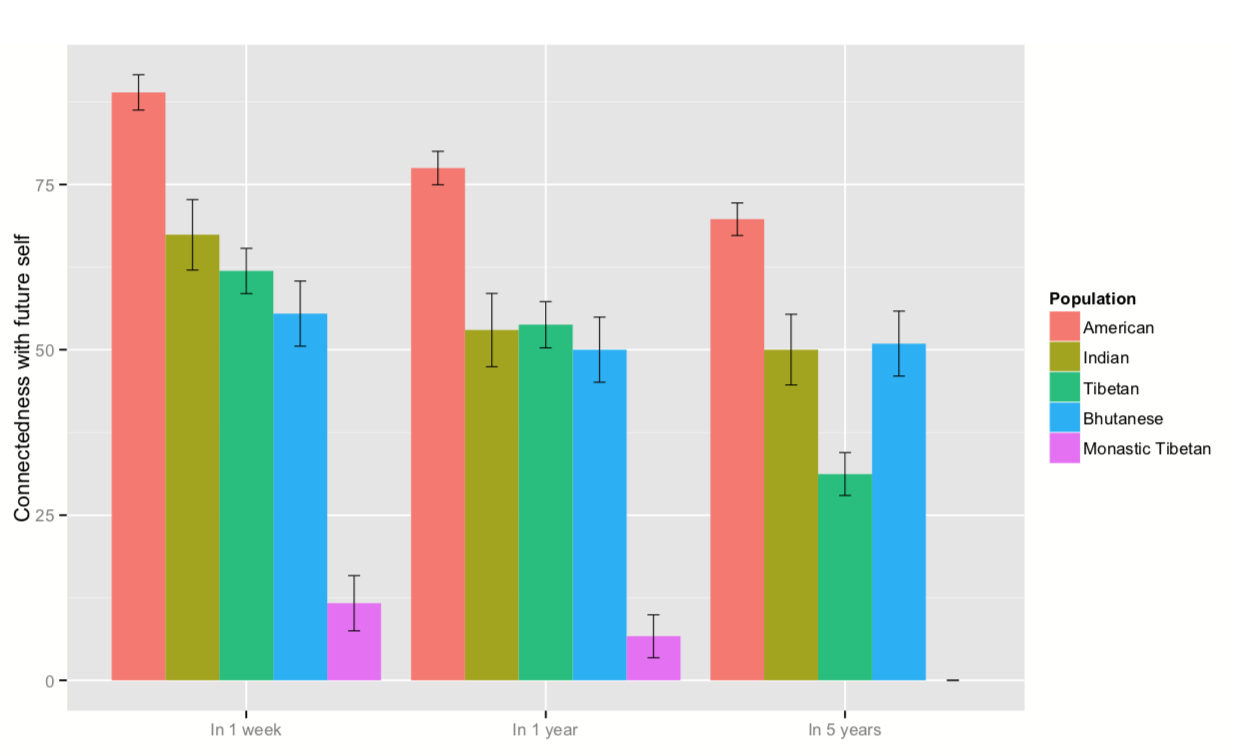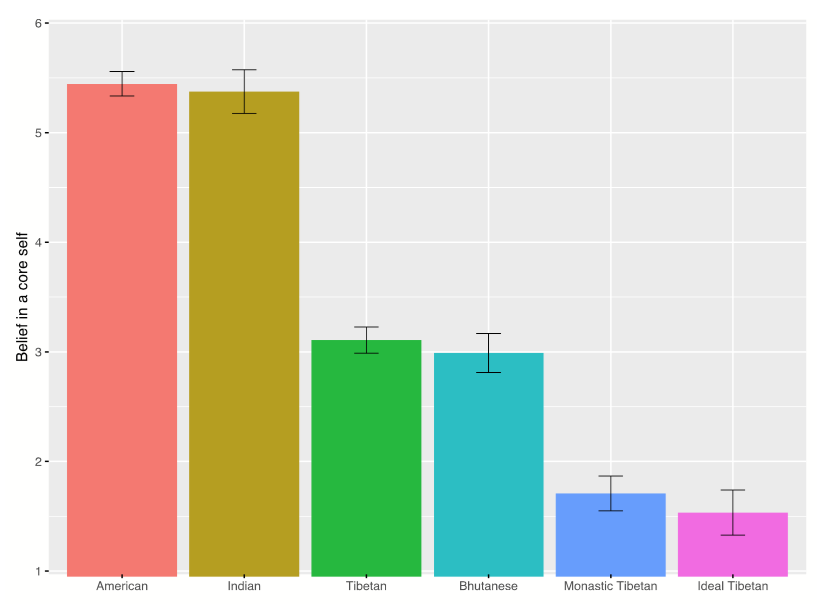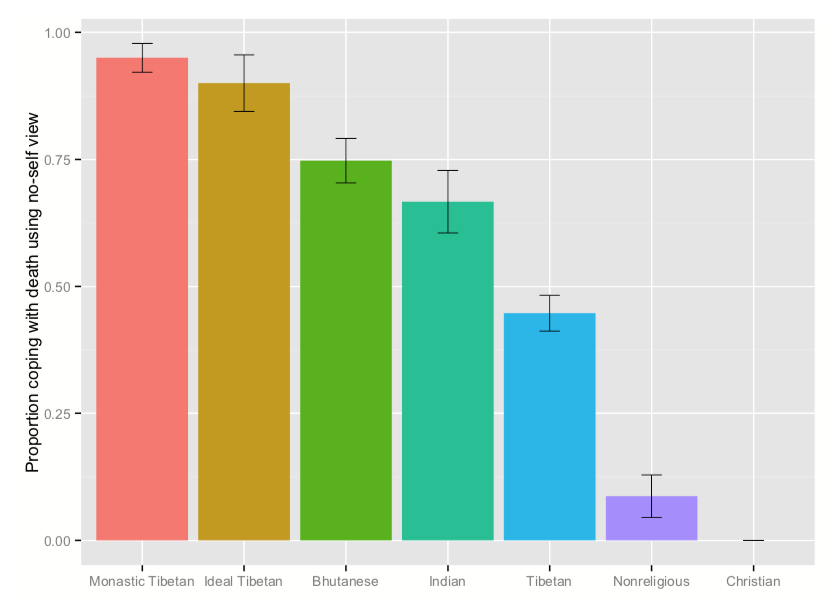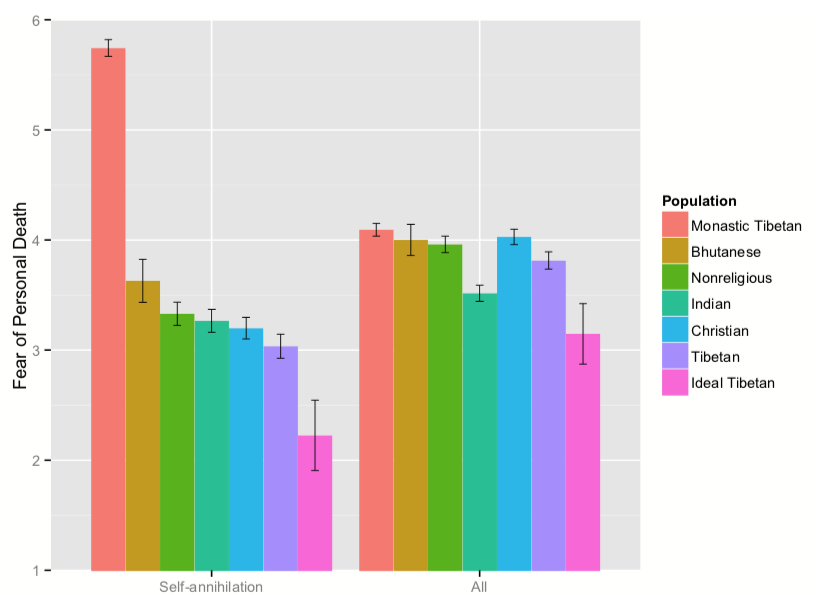Click here and press the right key for the next slide (or swipe left)
also ...
Press the left key to go backwards (or swipe right)
Press n to toggle whether notes are shown (or add '?notes' to the url before the #)
Press m or double tap to slide thumbnails (menu)
Press ? at any time to show the keyboard shortcuts
Personal Identity, Buddhist Monks and Death
‘Buddhist philosophers argue that the illusion of a persisting self underlies our fear of death. Once we recognize that there is no self that persists across the lifespan, fear of death should be alleviated, since its very foundation has been undermined. Similarly, Derek Parfit argues that coming to believe that there is no unitary enduring self should lead to changes in practical attitudes, including [...] fear of death (1984, 281–2, 347, 451)’

Stich et al, 2018 figure 1

Stich et al, 2018 figure 2

Stich et al, 2018 figure 3

Stich et al, 2018 figure 4
‘On every measure we used, the monastics deny the existence of the self. So why do they fail to show the expected reduction in fear of death?’
‘“minimalism implies that any metaphysical view of persons which we might have is either epiphenomenal or a redundant basis for our practice of making judgements about personal identity and organizing our practical concerns around this relation” (Johnston 1997, 150)’ \citep{shoemaker:2019_personal}.